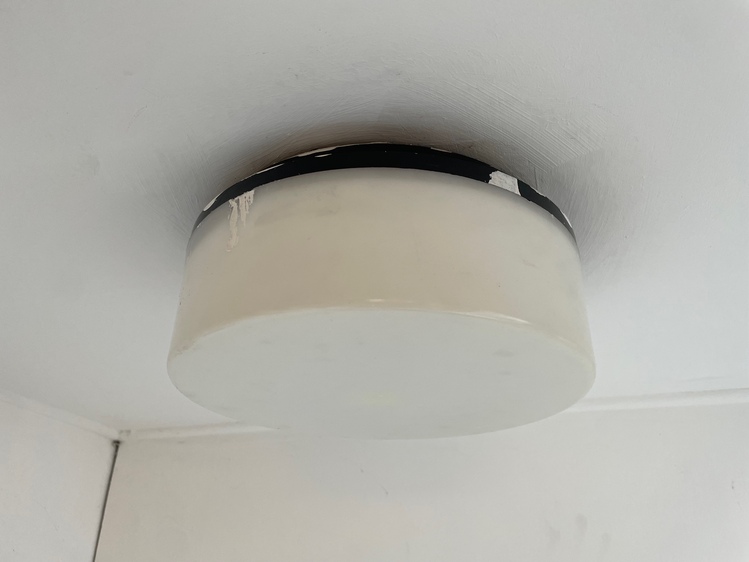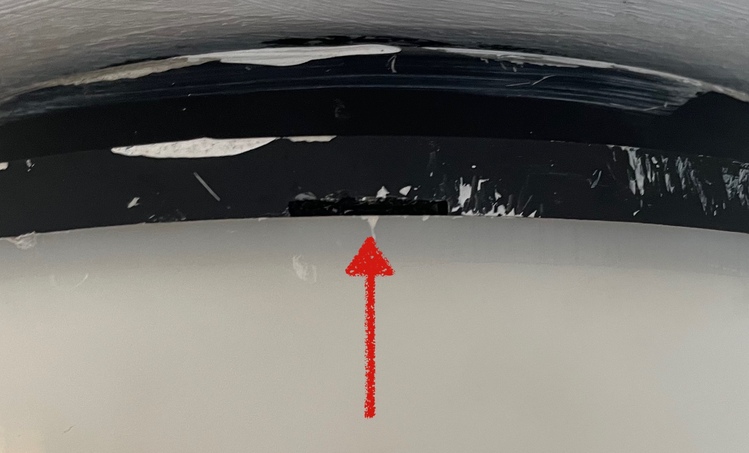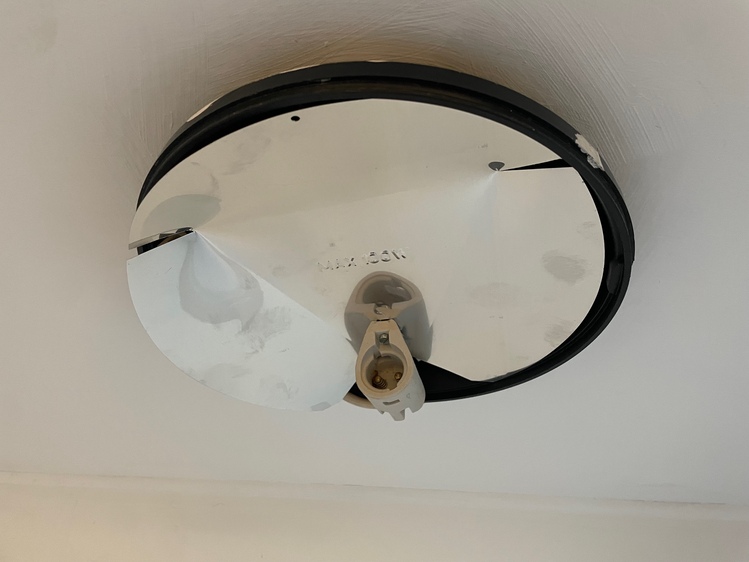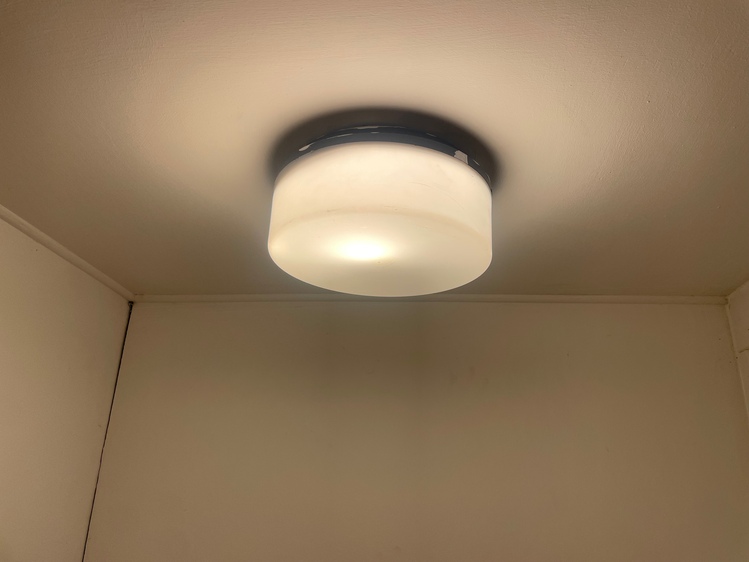Changing the bulb in a Meridian Lighting CIR100B ceiling light
I moved into my house a couple of years ago, and for all that time I’ve had a porch light which doesn’t work. I’ve tried taking it apart a couple of times to replace the bulb, but to no avail. Although it’s a simple cylinder with only a black base and a clear cover, I couldn’t work out any way to remove the cover – it didn’t unscrew, and there are no obvious buttons or latches that might detach it.
(Judging by the paint stains around the base, it hasn’t been detached since the last time the porch was repainted, and I’m pretty sure that was two owners ago. It’s been a while.)

I had another go today, and was roundly defeated in my first attempt to remove the cover. I had a quick look on some DIY forums, but without knowing the manufacturer or model, the results were less than useful. There are lots of different light fixtures!
Although I didn’t find anybody with my exact light on a quick skim, I did find several posts of people saying they’d done a reverse image search to look up their lamp. I was a bit sceptical, because this looks like a pretty generic design, but why not.

🤯
On the very first try, Google identified my light fitting, and gave me links to websites where I could buy the same light – thus giving me the make and model number (“Meridian Lighting CIR100B Circular Drum Bulkhead 100W MDNCIR100B”). It’s not even the same angle as the product shots, but they’ve matched them up.
Pretty much everything about reverse image search is still absolute magic to me, but this was especially impressive – to do this match, you need some level of spatial awareness; you need to know how three-dimensional objects look from different angles.
Unfortunately this name wasn’t super helpful, because I couldn’t find anything except shopping sites – there were no manuals or instructions online. Presumably it’s considered self-explanatory when you receive the fitting new, but mine was already installed and I didn’t want to break it.
The trick is to find the small gap in the base, where it meets the translucent cover. This is the only “interesting” feature on the outside of the light. I’d spotted it before and I knew it must be something, but I hadn’t worked out how to use it.
Insert a large flat-head screwdriver, and rotate along the screwdriver’s axis – you’re trying to separate the transparent cover from the base. It took a bit of jiggling with two screwdrivers, but eventually the cover unclipped and I could get to the bulb.

Once I’d removed the cover, I could see the base and the bulb socket. The problem was obvious: the bulb was missing. No wonder I’ve had a dark porch all this time.

The socket takes a standard bayonet bulb, up to 100W. I grabbed one from the cupboard, clipped the cover back on, and voila:

Let there be light.